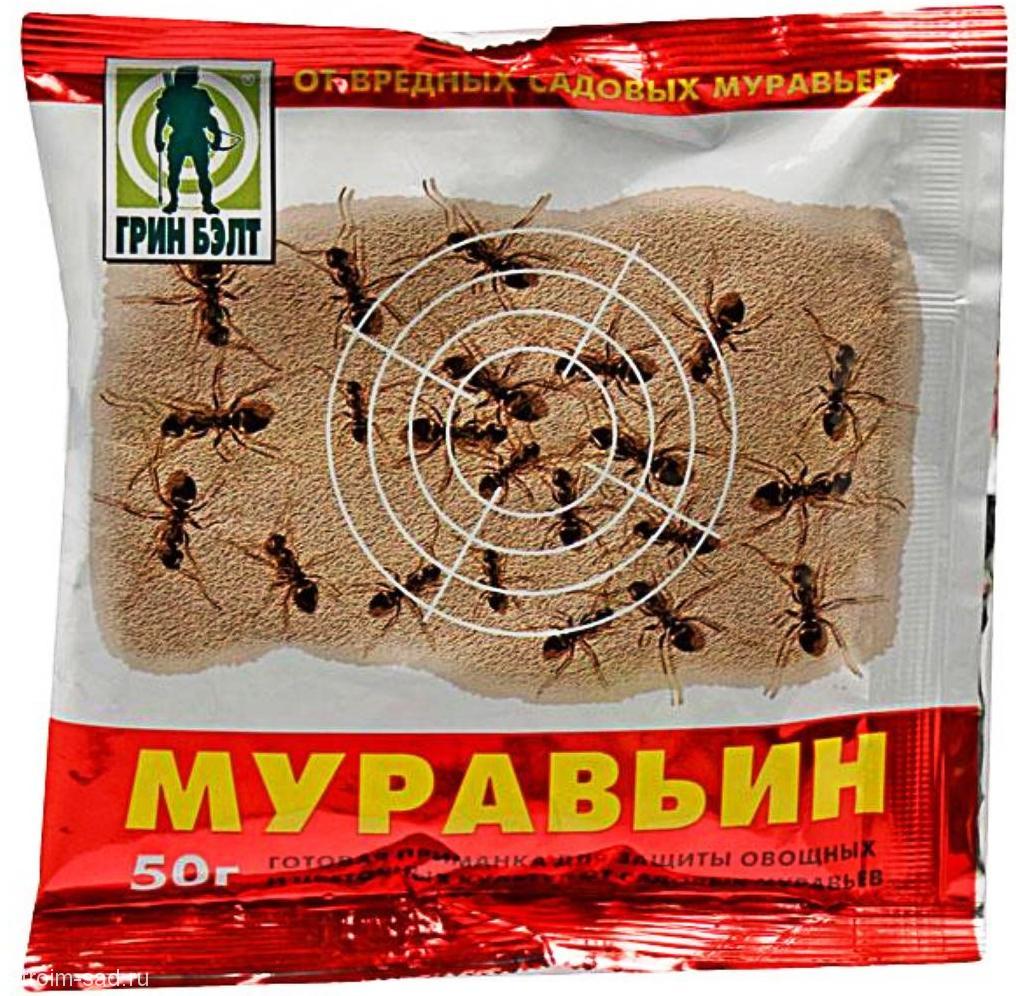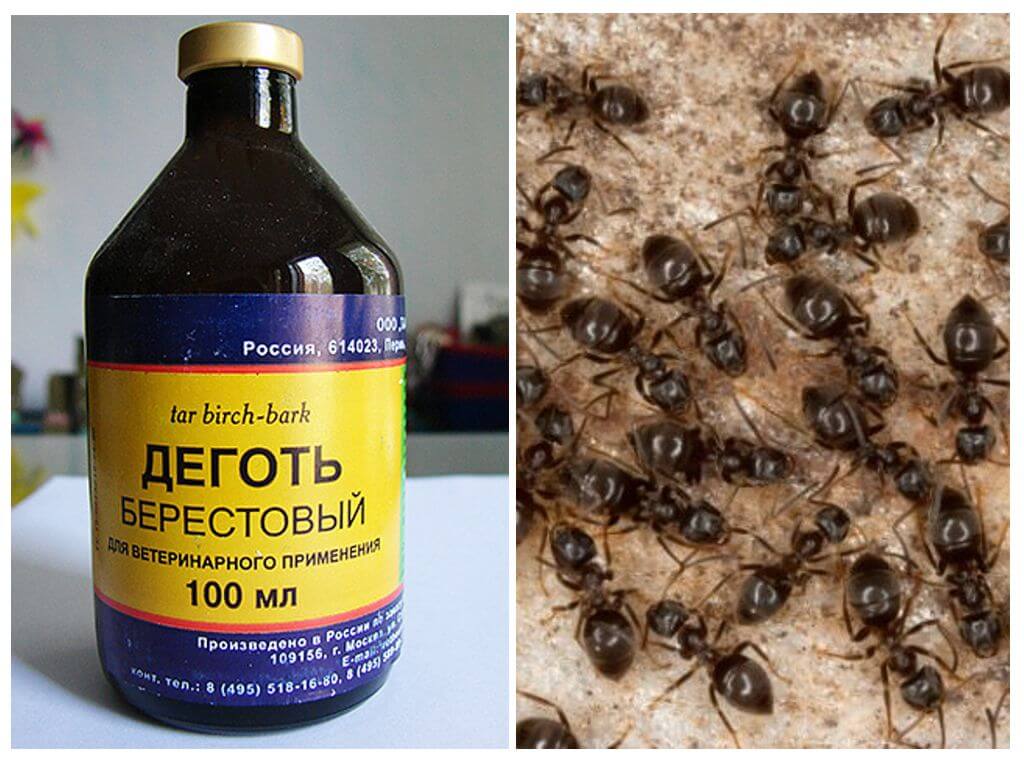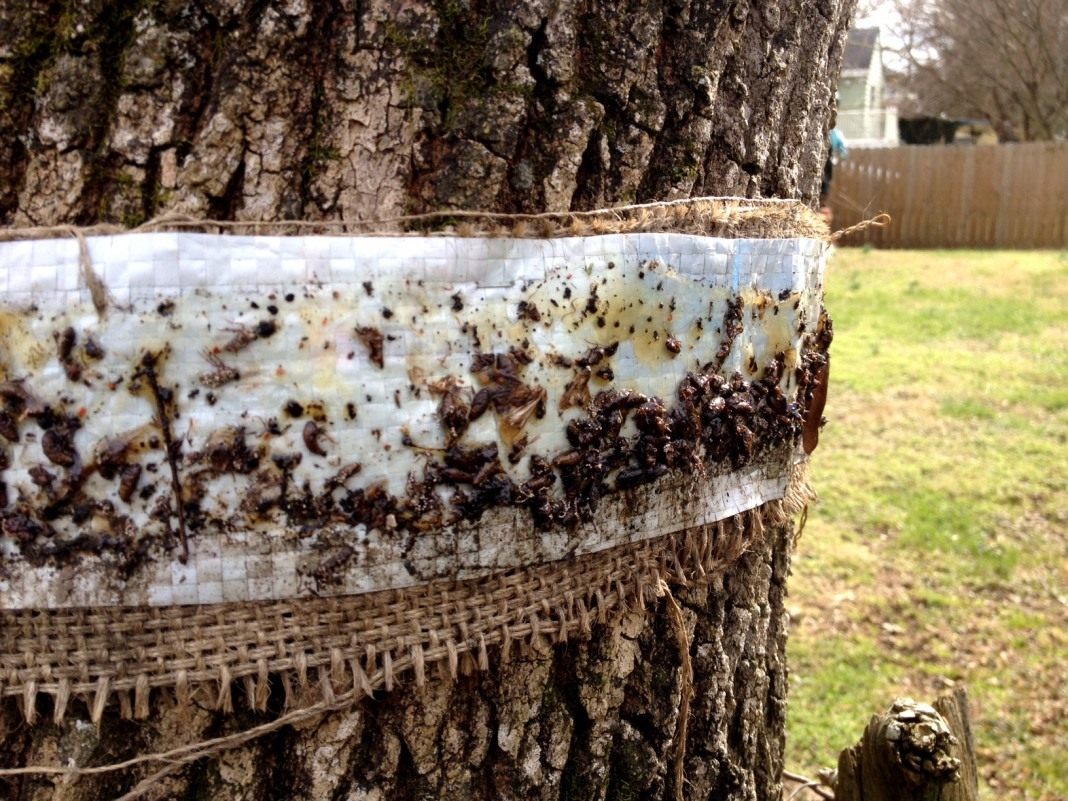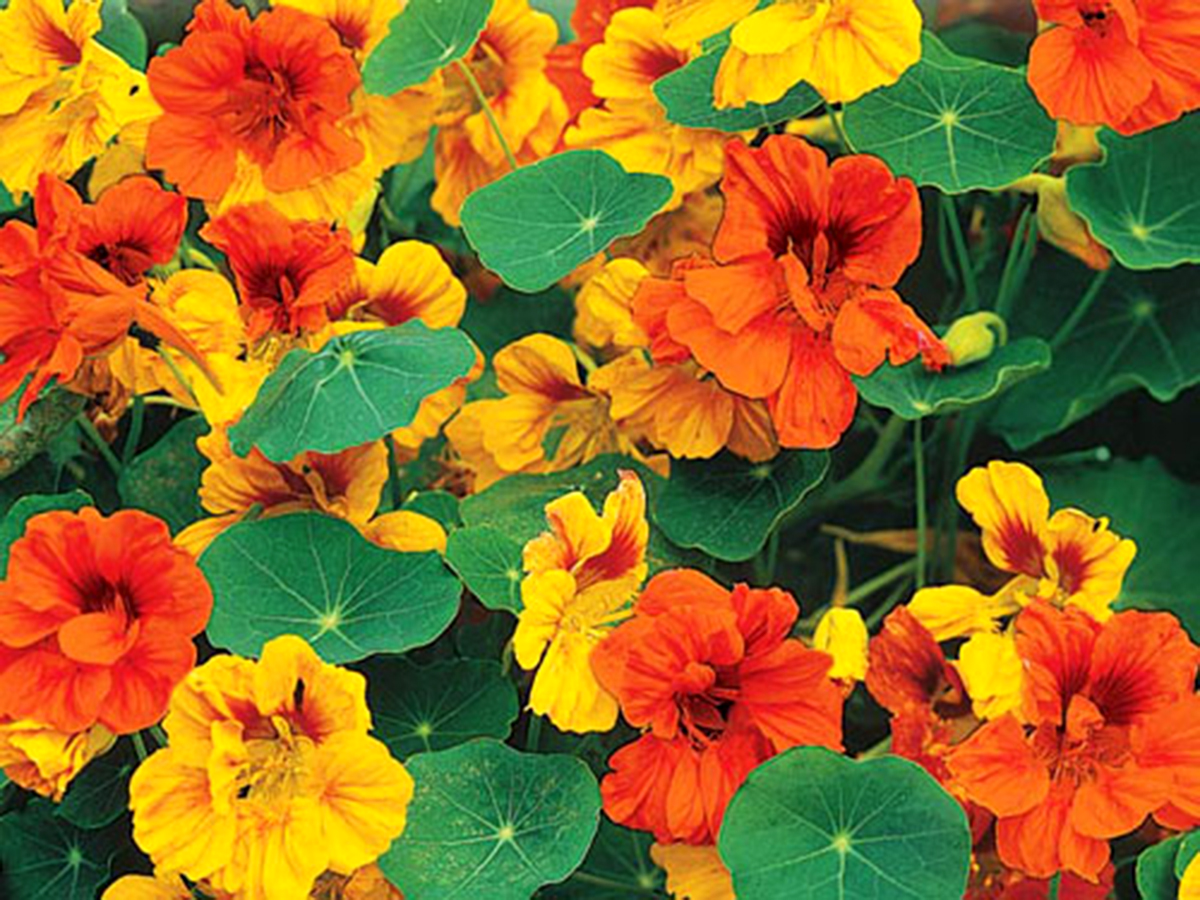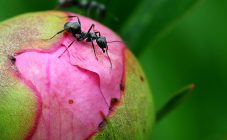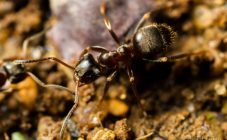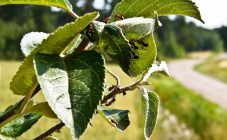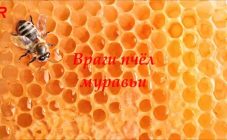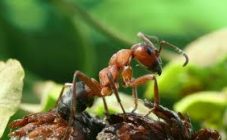Content:
Ants are very common insects that can be found not only somewhere in nature, but also in their own garden or home. Scientists and gardeners have repeatedly tried to find out what is more from ants - good or bad?
If we talk about the pros, it is one - the destruction of parasitic insects. Ants can do much more harm:
- Ants prefer to settle in the root part of horticultural crops, which leads to a disruption in plant nutrition. Young and immature cultures suffer the most. In addition, the pests gnaw the roots, and this can already destroy the planting.
- Digging of tunnels in the ground by insects leads to a violation of the thermoregulation of the soil layer.
- Nests of ants harm insulated beds and flower beds.
- Damage to unopened flower buds in some cases is also the cause of the "paws" of parasites. Flowering slows down and the decorative qualities of the plant decrease.
- Often ants bring aphids along with them, you can endlessly talk about the harm of these insects.
- Weeds can also get on the site, because ants bring seeds of various plants to their home as supplies.
From this it is worth concluding that black insects are more likely to do more harm to the garden plot than good, which means you need to find out what the ants are afraid of and how to get rid of them. For a war with the enemy, you can choose both folk remedies and chemical preparations, here each owner of the dacha must decide for himself. Below we will talk in more detail about the various methods, after familiarizing yourself with which, you can choose the most effective remedy for ants.
Chemicals
To decide what to poison the ants with, it is worth familiarizing yourself with the various insecticides sold to individuals. Almost all preparations for ants and other harmful soil inhabiting the base contain the following substances: chlorpyrifos and diazinon.
The first substance infects parasites through the respiratory system, paralyzing the nervous system. The agent will remain in the ground for about 120 days and have a destructive effect on pests for about 30 - 60 days.
The second substance will block the production of an enzyme that regulates the functioning of the nervous system in insects, causing first convulsions, then paralysis and death. Being absorbed into the roots of plants, diazinon protects plantings from ants for 14 to 20 days.
The table below will present the means for killing ants.
| Name | Active substance | How is it produced | Danger | How much is spent | How long is the effect achieved |
|---|---|---|---|---|---|
| Absolute | Chlorpyrifos | Helium mold, plastic containers | 4* | 0.125 l for 30m² or 2 - 3 containers for 10m² | 10 - 14 days |
| Anti-ant | Bura | Powder form (packing sachets, blisters) | 4 | 1 packet (blister) for 1-2m² | 5 - 6 days |
| a great warrior | Diazinon, chlorpyrifos | Helium form | 4 | 0.03g per 1m² put the gel on a cardboard and put it near the anthill | 1 - 1.5 days |
| Thunder 2 | Diazinon | Granules | 3** | 1 - 3g per ant dwelling | 2 - 4 days |
| Delicia | Chlorpyrifos | Powder form | 4 | 10g per 1m² | 10 - 14 days |
| Medvetox | Diazinon | Granules | 3 | 20g per 10m² | 3 - 5 days |
| Ant-eater | Emulsion concentrate | 3 | 1ml: 10l of water per 5m² | 1 - 2 days | |
| Muravyin | Granules | 3 | 20g per 10m² | 3-5 days | |
| Muratox | Emulsion concentrate | 3 | 1ml: 10l of water per 5m² | 3 day | |
| Muracid | Water emulsion | 3 | 1ml: 10l of water per 5m² | 1 day |
* is a low-hazard agent;
** poses little danger to humans and animals
How to use Ant
This drug is called a real poison for ants and is used in the following proportion: 20-30g of the agent per 10m² must be applied to the soil layer to a depth of 3 cm.
To process ornamental plants, shrubs and fruit trees, add 3g per 1m². Anti-ants are poured out where they accumulate in insects during the growth of these crops. To destroy insects in the garden in order to protect potatoes and onions, the drug is scattered in the same amount. It is necessary to apply immediately after the plants are sown or seedlings are planted in the beds. To destroy the anthill, it is necessary to pour in the agent at the rate of 3g per 1m² and deepen it by 3 cm.
This is how the instructions for use of Muravyin 10 g look like. When using it in gardens, gardens and greenhouses, you should follow simple safety rules and make sure that the product does not get on your hands and eyes.
Application of Antimuravyin
This tool is suitable for both a garden plot and an apartment. In the second case, you need to acquire several small containers where the powder will be poured. The poison from ants spreads out in those places where the largest accumulations of insects and eggs with offspring are found, for example:
- Kitchen Cabinet;
- plinth;
- window frame;
- sink.
After placing the containers, the drug begins to act after a few days. The powder should remain in place until the insects are completely destroyed. The main safety condition is to remove food, children's toys and keep animals away from the poison.
When working on a vegetable garden, the insecticide is sprayed next to the anthill at a distance of about 30 cm. It is not recommended to scatter the agent in the air, it may belong to the 4th hazard class, but it cannot be inhaled. Gloves and a mask should be used to work with the drug.
Using folk remedies
After getting acquainted with chemicals, the question arises, what scares away an ant from simple improvised means? There are a number of time-tested home recipes.
Birch tar
This tool scares away harmful inhabitants due to a persistent pungent odor that persists for a long time. The aroma will scare off not only ants, but also a whole list of garden pests (bears, mosquitoes, aphids, mice).
The deterrent effect persists as long as there is a tar smell, as soon as it disappears, the treatment will have to be carried out again. For the garden and vegetable garden, periodic application of the agent to the plants is used, when the ants have already appeared, or for preventive purposes.
Various traps and baits are excellent anti-ants.
Hunting belt
To prevent aphids from attacking the garden, which spreads through carrier ants, a special sticky belt is attached to the young shoots of trees and shrubs. The ant will stick firmly to the surface of the trap.
Cunning bait
These tools are interesting in that they will attract the attention of a large number of insects due to their content. All that remains is to collect the traps and destroy, for example, burn, pour boiling water, drown, etc.
The most popular recipes are:
- dilute honey and pour it on a regular sponge used for washing dishes, put bait where ants walk, and after the insects stick around the whole trap, throw it into boiling water;
- dissolve honey or sugar in water until a sweet liquid is obtained, pour into several cans and place containers throughout the area, especially where ants are most active. Insects will get into the jar, but they will not be able to get out of there;
- an excellent bait can be a meat bone, a jar where there were sweet or meat products, in a word, everything that looks attractive from the ant side.
Poisonous bait
The products are based on drugs that are deadly for ants: borax, yeast, boric acid, etc. After eating such substances, insects will die. You can prepare a similar trap as follows:
Method number 1
- hot water - 2 tablespoons;
- granulated sugar - 1 tablespoon;
- bora - ¼ teaspoon;
- honey - 1 teaspoon (add after cooling the product).
Method number 2
- sugar - 40%;
- honey - 10%;
- borax - 5%;
- water - 45%.
Pour the resulting solution into containers (it is best to use test tubes) and spread them in an inclined position where the ants are most active. One tube for 3 - 4m²
Method number 3
- minced meat - 2 tablespoons;
- ground borax - ½ teaspoon.
Mix the ingredients and place in the places of the greatest accumulation of insects.
Method number 4
- yeast - 1 tablespoon;
- jam - 1 teaspoon;
- cold boiled water.
Add yeast to the last component, in such an amount that a thick creamy mass is obtained, add jam, spread on pieces of cardboard and spread out on ant paths.
Plants to protect the garden and home from ants
If we continue to talk about what ants do not like, then various garden and home cultures cannot be ignored. Their whole secret lies in the smell, which is completely unbearable for insects. By the way, you can not only plant this or that culture, but also use essential oil.
Ants don't like harsh-smelling plants, and therefore you can drive them out of the site simply by planting the following crops:
- lavender, marigold flowers;
- lemon balm, mint, valerian;
- nasturtium, rosemary;
- potatoes;
- parsley, dill, cilantro, mustard;
- anise, fennel.
Most often, these plants are planted around the perimeter, between the beds are placed bushes of mint or marigolds, which will ward off insects. How else to scare off ants? You can prepare a decoction from any of the above culture and use it for spraying.
Having become acquainted with the many ways to fight ants, any gardener can now choose the remedy that he likes best, whether it be chemicals or folk environmentally friendly formulations.

